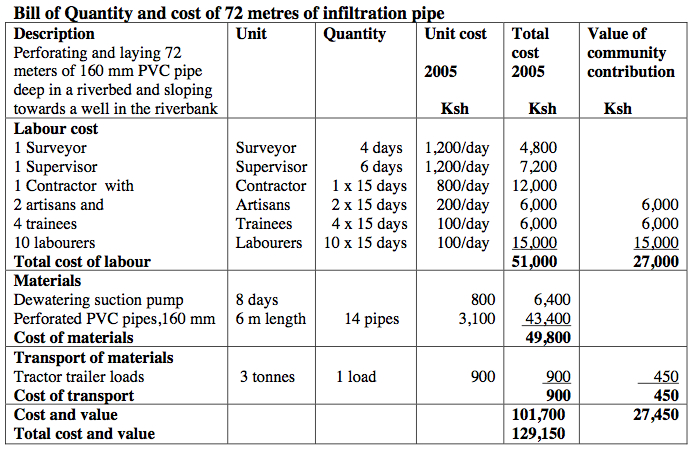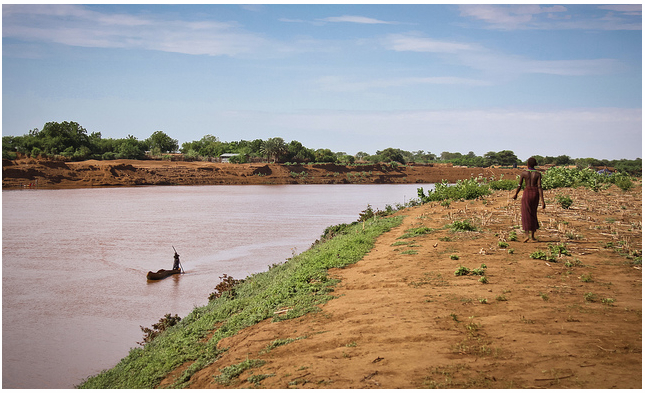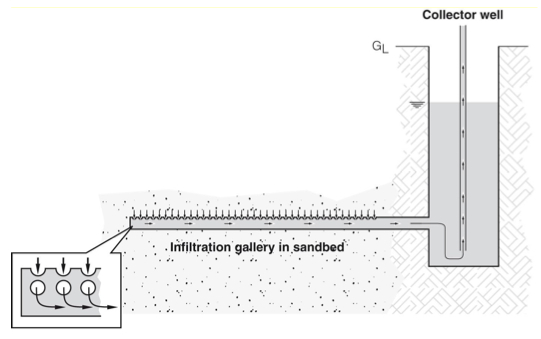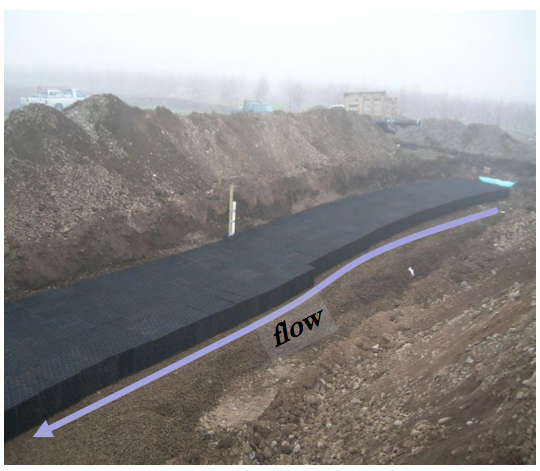Difference between revisions of "Riverbed infiltration galleries"
(→Reference manuals, videos, and links) |
(→Acknowledgements) |
||
| Line 43: | Line 43: | ||
==Acknowledgements== | ==Acknowledgements== | ||
* CARE Nederland, ''Desk Study Resilient WASH systems in drought prone areas.'' October 2010. | * CARE Nederland, ''Desk Study Resilient WASH systems in drought prone areas.'' October 2010. | ||
| + | * [http://www.google.com/url?sa=t&rct=j&q=&esrc=s&source=web&cd=1&ved=0CDsQFjAA&url=http%3A%2F%2Fwww.waterforaridland.com%2FBooks%2FBook3%2520water%2520from%2520dry%2520riverbedspdf.pdf&ei=qnCAT5mSMZPTiAKAwNH8Ag&usg=AFQjCNFLQVx1iso2008fkzuXgEsFbVPbGA&sig2=Giq0lCvcm6aVTcka9qSoQw Water from Dry Riverbeds]. Waterforaridland.com. | ||
Revision as of 18:58, 7 April 2012
Channels take water from a riverbed to a collector well in the riverbank. They are often screens (slotted or perforated pipes) that are inserted horizontally into a riverbed, but also infiltration galleries can be made from channels with graded gravel as long as sediments are not washed into the collector well. Where screens are used, the screen diameter tends to be larger than that used normally for jetted/driven wells.
Contents
Suitable conditions
- Infiltration galleries are often installed in shallow or fine sediment beds where there is poor permeability or lack of sand depth – in this case, the length proves to be advantageous.
- They can also be sited in areas where riverbanks are too high to allow manual or motorized suction pumps to operate.
- There should be water remaining in the riverbed throughout the dry season.
- Make it in a degrading river section where there is no deposition, so there are coarser grains and no silt deposits blocking flow.
| Advantages | Disadvantages/limitations |
|---|---|
| - Allows a method of water extraction where sand depth is shallow or where sediments are fine and have low permeability - Cheap where it can be done without shuttering |
- Difficult to make deep enough to ensure water at all times. Laying deeper galleries involves digging deeper and preventing sand trenches from collapsing by using shuttering – this becomes a more involved and expensive process - Significant amount of work involved |
Construction, operations and maintenance
- The length of screen required will be greater for an infiltration gallery than for a jetted or driven well – in an infiltration gallery, water flows to the collector well under hydraulic head rather than being pumped out with a suction pump. Diameter of screen used is typically 75 – 300 mm PVC and varies from a few metres up to several hundred metres in length. Layouts vary according to the river widths. Yields are typically 15 litres/min/metre, but depends on depth from river to sump.
- Ensure that galleries are dug deep enough to allow enough flow during the dry season. In practical terms, this means aiming for at least 1 metre depth within the saturated zone. If more than one pipe are installed, distance between pipes should not be less than 3 metres.
- The top of the gallery should be ideally 1.5 metres minimum from the riverbed surface. This is so that:
- There is at least a minimum of infiltration that occurs from surface water during the wet season when the river is flooded.
- That there is less chance that the well shaft and pipework will be washed away in a flood event. Sand becomes mobile to a certain depth which differs for different rivers but has been recorded to be normally between 0.66 and 2 metres in seasonal riverbeds.
- Graded gravel needs to be placed under and over the pipe to minimize clogging with sediments.
Costs
Below is an example of costs of infiltration labour, materials, and transportation. Currency is in the Kenyan shilling. 100 Ksh = 1.20 USD.
Find out more about installing a riverbed infiltration system, Chapter 4 of Water from Dry Riverbeds. Waterforaridland.com.

Field experiences
Reference manuals, videos, and links
- Designing Intakes for Rivers and Streams. Water for the World. - Lots of design diagrams and instructions on how to build a river intake system.
- Water from Dry Riverbeds. Waterforaridland.com.
Acknowledgements
- CARE Nederland, Desk Study Resilient WASH systems in drought prone areas. October 2010.
- Water from Dry Riverbeds. Waterforaridland.com.



